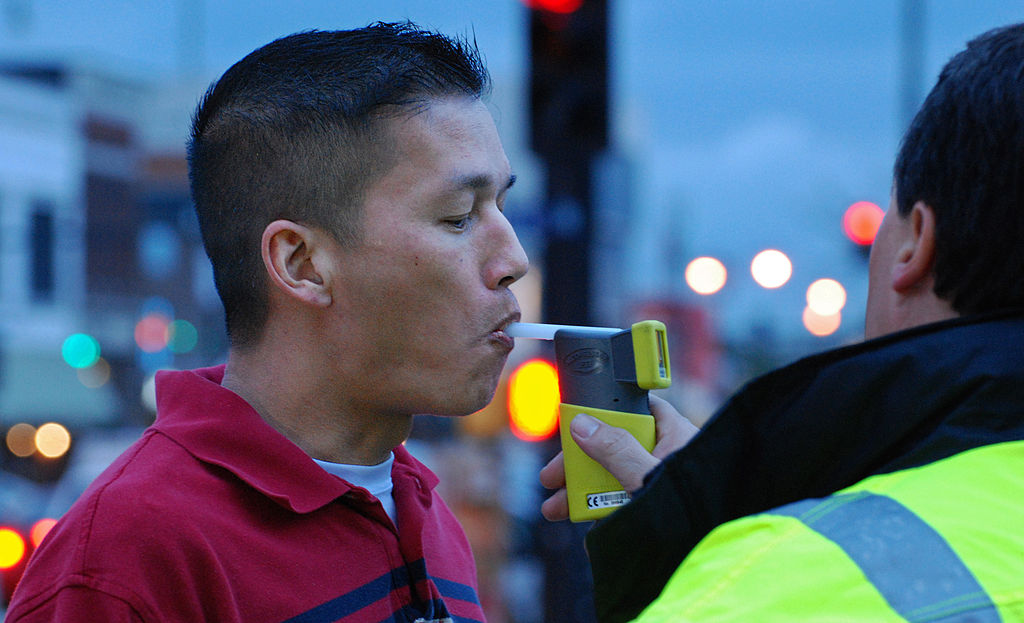Unlike alcohol, marijuana intoxication is notoriously difficult to measure after someone has taken a puff. The only way to get an accurate reading on how stoned someone is requires a blood or saliva sample, but these invasive methods don’t work so well when law enforcement officers run roadside sobriety tests. Not only have courts ruled that police officers require a warrant to take a blood sample, but getting results from blood tests can often take several hours.
In most arrests related to stoned driving, the cases end up being tossed out due to the inability to determine whether or not the driver was impaired at the time of arrest (traces of cannabis can stay in the body for days). This has resulted in a race to build a weed breathalyzer that law enforcement officials can use to accurately measure how much THC-9, the psychoactive compound in marijuana, is in a person’s body at the time of arrest.
Videos by VICE
So far the progress has been slow going, but thanks to new research published Wednesday by the National Institute of Standards and Technology (NIST), the halcyon days of cruising around stoned may soon be over.
As detailed in Forensic Chemistry, researchers at NIST were able to measure the vapor pressure of THC-9 for the first time, using a method normally reserved for detecting explosives. This measurement technique will provide a foundation for determining how much THC is in a person’s blood—the main gauge lawmakers use for intoxication (even though there’s scant evidence that this applies to marijuana).
“Vapor pressure describes how a compound behaves when it transitions from a liquid to a gas,” Tara Lovestead, a NIST chemical engineer and the lead author of the study, said in a statement. “That’s what happens in your lungs when a molecule leaves the blood to be exhaled in your breath. So if you want to accurately measure blood levels based on breath, you need to know the vapor pressure.”
Substances with high vapor pressure tend to be made of relatively simple and light molecules. This allows these molecules to more easily ‘escape,’ or evaporate from a liquid’s surface until an equilibrium is established in the container—that is, as many molecules are returning to a liquid state as are evaporating into a gaseous state. Ethyl alcohol—the kind found in beverages—is an example of a substance with a high vapor pressure. THC, on the other hand, is a heavy and complex molecule compared to ethyl alcohol, which means it has a much lower vapor pressure.
Read More: Quantifying Weed: Why We Need More Data on Our Dank
Most of the handful of weed breathalyzers that are currently being developed by UC Berkeley and the University of Florida make use ion mass spectrometry to measure the amount of THC on a person’s breath. This is basically a way of using charged particles, called ions, to filter out organic compounds (like THC) from a person’s breath so that the THC levels can then be measured. While this is pretty accurate and reveals whether a user has smoked weed in the last few hours, it doesn’t give a practical answer to how much THC is in a person’s blood.
A more practical and accurate solution for a weed breathalyzer was needed, so Lovestead and her colleagues turned to a technology pioneered at NIST in 2009, albeit for a very different use case. Known as porous layer open tubular cryogenic adsorption, or PLOT-cryo for short, this technique was originally developed for detecting trace amounts of explosives in the air at airports.
In the NIST experiment, researchers sprayed pure THC with an inert gas used to trap THC molecules escaping as vapor. Once these molecules were trapped, the gas was chilled, and measured. Since the amount and temperature of the inert gas was known, it was possible to determine the amount of THC in the gas and thus determine its vapor pressure.
Although the NIST researchers aren’t developing a functioning breathalyzer themselves, the ability to measure the vapor pressure of the main psychoactive ingredient will likely play a critical role in developing more accurate weed breathalyzers.
“Fundamental measurements are the basis of standardization,” Tom Bruno, a NIST research chemist said. “We’re laying the foundation for the reliable systems of the future.”




